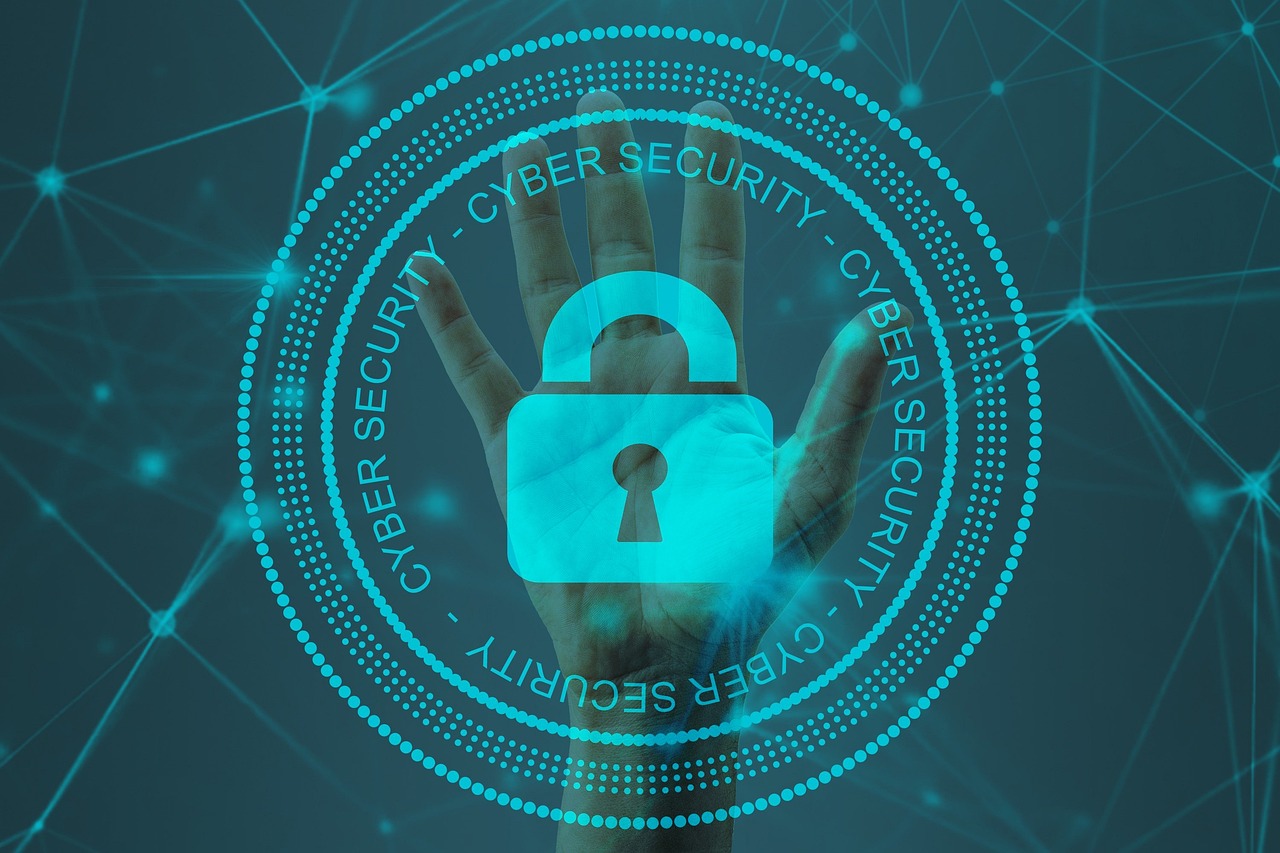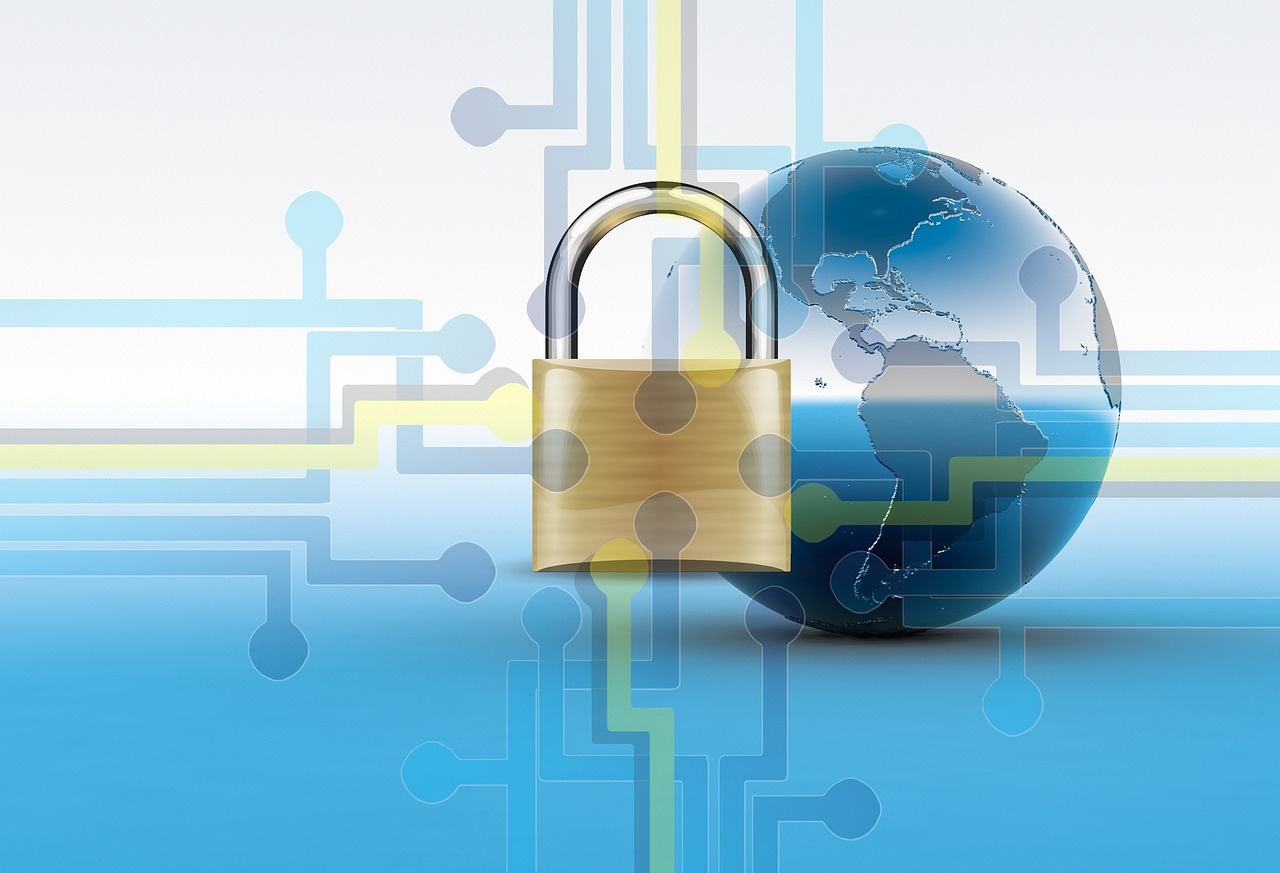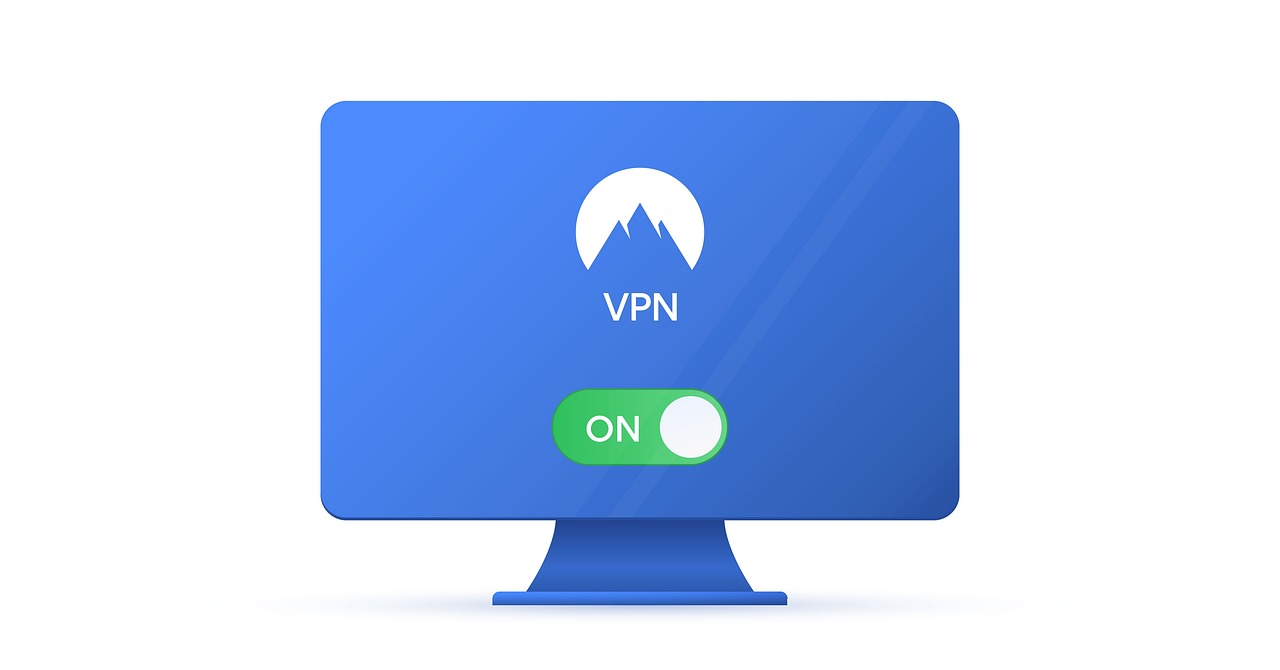Preparing Your Business for a Cyber Attack
In today's digital landscape, the looming threat of cyber attacks is more prevalent than ever. As businesses increasingly rely on technology to operate, the need to prepare for potential cyber threats has become a top priority. Imagine waking up one morning to find that your sensitive data has been compromised, your operations are halted, and your reputation is at stake. This nightmare scenario could become a reality without the right strategies in place. So, how can you ensure your business is ready to face the unexpected? In this article, we will explore essential strategies and practices that can help you defend against cyber threats, ensuring your organization remains resilient in the face of potential attacks.
Before we dive into preparation strategies, it's crucial to understand the types of cyber threats that businesses face today. Cyber threats come in various forms, each with its own implications for organizational security. Here are a few of the most common:
- Malware: Malicious software designed to disrupt, damage, or gain unauthorized access to computer systems.
- Phishing: Deceptive attempts to obtain sensitive information by masquerading as a trustworthy entity.
- Ransomware: A type of malware that encrypts the victim's files, demanding payment for the decryption key.
Understanding these threats is the first step in building a robust defense. Each type poses unique challenges and can have devastating consequences if not addressed. For example, a successful phishing attack can lead to unauthorized access to sensitive data, while ransomware can cripple your operations, leaving you at the mercy of cybercriminals.
Once you have a grip on the types of threats out there, the next step is to assess your current security posture. This involves evaluating your existing cybersecurity measures, identifying vulnerabilities, and determining areas that require improvement. Think of it like a health check-up for your business's cybersecurity.
A risk assessment is a vital tool that helps identify potential risks and their impact on your business. By understanding these risks, you can implement appropriate security measures and prioritize resources effectively. This process can be broken down into a few key steps:
- Identify potential threats and vulnerabilities.
- Evaluate the impact of these threats on your business operations.
- Prioritize risks based on their likelihood and potential impact.
Recognizing your business's most valuable assets is crucial for effective risk management. These assets could include customer data, intellectual property, or proprietary software. By focusing your protection efforts on these critical components, you can significantly reduce the risk of a successful cyber attack.
Understanding the likelihood and potential impact of various threats enables businesses to allocate resources effectively. For instance, if your assessment reveals that phishing attacks are highly probable, you can invest more in employee training and awareness programs to combat this threat.
Creating a comprehensive cybersecurity strategy involves setting clear objectives, defining roles, and establishing protocols to mitigate risks and respond to incidents effectively. This strategy should be a living document, regularly reviewed and updated to adapt to the ever-evolving cyber threat landscape.
One of the most effective ways to bolster your cybersecurity defenses is through employee training and awareness. Educating employees about cybersecurity best practices is essential for building a security-conscious culture. After all, even the most advanced security systems can be compromised by human error.
Regular training sessions equip employees with the knowledge and skills needed to recognize threats and respond appropriately. This not only minimizes risks associated with cyber attacks but also empowers employees to become the first line of defense for your organization. Consider incorporating real-world scenarios into your training to make it more engaging and relatable.
Developing and communicating clear cybersecurity policies ensures that all employees understand their responsibilities and the protocols they must follow to maintain security. A well-defined policy serves as a roadmap, guiding employees on how to act in various situations, whether it's identifying a phishing email or reporting a suspicious activity.
Even with the best preventative measures, cyber attacks can still occur. That's why having an effective incident response plan is crucial. This plan outlines the steps your business should take in the event of a cyber attack, ensuring a swift and organized response to minimize damage.
Forming a dedicated team responsible for managing cybersecurity incidents enables your business to respond quickly and efficiently. This team should consist of individuals with diverse skills and expertise, allowing for a comprehensive approach to incident management.
Regularly testing and updating your incident response plan is essential to ensure its effectiveness. Cyber threats are constantly evolving, and your response strategies should adapt accordingly. Conducting drills and simulations can help keep your team prepared for any situation that may arise.
Q: What should I do first if I suspect a cyber attack?
A: Immediately report the incident to your incident response team and follow your established protocols to contain the threat.
Q: How often should I conduct cybersecurity training for my employees?
A: It's recommended to conduct training at least twice a year, with additional sessions as needed based on emerging threats.
Q: What are the signs of a phishing attempt?
A: Look for generic greetings, unexpected attachments, and urgent requests for sensitive information.

Understanding Cyber Threats
In today's digital landscape, businesses face a myriad of cyber threats that can compromise their operations, data integrity, and customer trust. It's not just about the occasional hacker trying to break into systems; the threat landscape is vast and constantly evolving. Understanding these threats is the first step in fortifying your defenses. So, what are the main types of cyber threats that businesses encounter?
One of the most prevalent threats is malware. This malicious software can take many forms, including viruses, worms, and trojan horses. Once it infiltrates a system, it can wreak havoc by stealing sensitive data, corrupting files, or even taking control of entire networks. Imagine malware as a sneaky intruder who not only breaks into your house but also starts rearranging your furniture and stealing your valuables. The impact can be devastating.
Another significant threat is phishing. This tactic involves tricking individuals into divulging personal information, such as passwords or credit card numbers, often through seemingly legitimate emails or messages. Picture it like a con artist posing as a trusted friend, luring you into a false sense of security before making off with your most prized possessions. Phishing attacks can lead to severe financial losses and data breaches.
Then we have ransomware, which has become a household name in the realm of cyber threats. This type of malware encrypts a victim's files, rendering them inaccessible until a ransom is paid. It's akin to a kidnapper taking your favorite toy hostage and demanding payment for its return. The consequences can be dire, as businesses may face operational downtime and reputational damage if they do not have proper backups or recovery plans in place.
To further illustrate the diversity of cyber threats, consider the following table that highlights some common types and their implications:
| Type of Threat | Description | Potential Impact |
|---|---|---|
| Malware | Malicious software designed to harm or exploit any programmable device or network. | Data theft, system damage, operational disruption. |
| Phishing | A technique used to trick individuals into revealing sensitive information. | Identity theft, financial loss, data breaches. |
| Ransomware | Malware that encrypts files and demands payment for decryption. | Operational downtime, loss of data, financial extortion. |
Moreover, businesses should be aware of other threats such as denial-of-service (DoS) attacks, where systems are overwhelmed with traffic, making them unavailable to users. There's also the risk of insider threats, where employees or contractors, intentionally or unintentionally, compromise security. Understanding these threats is crucial for developing a robust cybersecurity strategy.
In conclusion, grasping the landscape of cyber threats is essential for any business looking to protect itself in this digital age. The more you know about these dangers, the better equipped you'll be to defend against them. So, are you ready to take the next step in securing your business?

Assessing Your Current Security Posture
When it comes to cybersecurity, knowing where you stand is half the battle. is essential for identifying weaknesses and understanding how well your defenses hold up against potential threats. This process involves a thorough evaluation of your existing cybersecurity measures, pinpointing vulnerabilities, and determining areas that require improvement. Think of it as a health check-up for your business's digital security; just as you wouldn’t ignore a recurring cough, you shouldn’t overlook signs of a cybersecurity risk.
To kick off this assessment, you might want to start with a comprehensive risk assessment. This involves identifying potential risks and analyzing their impact on your business operations. By doing so, you can prioritize your resources and implement appropriate security measures. It’s like putting on your detective hat and investigating what could go wrong, helping you formulate a plan to mitigate those risks.
A risk assessment can seem daunting, but it’s a necessary step in securing your business. Start by gathering data on your existing systems, processes, and security protocols. This information will allow you to identify where vulnerabilities lie. For instance, are your software and hardware up to date? Are there any gaps in your firewall or antivirus protections? By answering these questions, you can create a clearer picture of your security landscape.
Not all assets are created equal when it comes to cybersecurity. Recognizing your business's most valuable assets is crucial for effective risk management. These could include sensitive customer data, proprietary information, or even your intellectual property. By focusing your protection efforts on these critical assets, you can ensure that your most valuable resources are shielded from potential threats. Think of it as protecting the crown jewels of your organization; you wouldn’t leave them lying around unguarded, would you?
Once you’ve identified your critical assets, the next step is to evaluate the threat levels associated with them. Understanding the likelihood and potential impact of various threats is vital. For instance, you might find that phishing attacks are more common in your industry, or that ransomware is a growing concern. By assessing these threats, you can allocate resources more effectively and develop strategies that address the most pressing concerns.
In conclusion, assessing your current security posture is not a one-time task but an ongoing process. Regular evaluations can help you stay ahead of potential threats and ensure that your business is resilient in the face of cyber attacks. Remember, just like a well-oiled machine requires routine maintenance, so too does your cybersecurity framework. Keeping it sharp and up-to-date will help you navigate the ever-evolving landscape of cyber threats.
- What is a security posture? - A security posture refers to the overall security status of an organization's software, hardware, and networks, including its ability to detect and respond to threats.
- How often should I assess my security posture? - It's recommended to perform a security posture assessment at least annually, or whenever there are significant changes in your business or technology.
- What are some common vulnerabilities to look for? - Common vulnerabilities include outdated software, weak passwords, lack of employee training, and insufficient network security measures.

Conducting a Risk Assessment
In today’s digital landscape, conducting a risk assessment is not just a good idea; it’s an essential step for any business aiming to safeguard its assets and data. Think of it as a health check-up for your cybersecurity posture. Just as you wouldn’t ignore symptoms of illness, you shouldn’t overlook potential vulnerabilities in your systems. A thorough risk assessment helps you identify potential risks and their impact on your business, guiding you to implement appropriate security measures and prioritize resources effectively.
So, how do you go about conducting a risk assessment? First, you need to gather a comprehensive understanding of your organization’s operations, technology, and the data you handle. This involves:
- Identifying Critical Assets: Recognizing your business's most valuable assets is crucial for effective risk management. This includes not only sensitive data but also hardware, software, and even your brand reputation. By focusing protection efforts on these critical components, you ensure that your most important resources are safeguarded.
- Evaluating Threat Levels: Understanding the likelihood and potential impact of various threats enables your business to allocate resources efficiently. Are you more at risk from phishing attacks, or is ransomware a bigger concern? By assessing these threats, you can develop strategies that address the most pressing concerns.
Once you have identified your assets and evaluated the threat landscape, it’s time to analyze the vulnerabilities in your current systems. This involves looking at everything from outdated software to employee training gaps. For example, if you find that many employees are unaware of phishing tactics, this is a vulnerability that could be easily addressed through training.
To put it all together, you can create a risk assessment matrix that categorizes risks based on their likelihood and impact. This visual tool can help prioritize which risks need immediate attention versus those that can be monitored over time. Here’s a simple example of what that might look like:
| Risk | Likelihood | Impact | Priority |
|---|---|---|---|
| Phishing Attack | High | High | Critical |
| Ransomware | Medium | High | High |
| Data Breach | Low | Very High | Medium |
By systematically identifying and analyzing risks, you can develop a robust cybersecurity strategy tailored to your business's unique needs. Remember, the goal of a risk assessment is not just to check a box but to foster a culture of proactive security within your organization. After all, in the world of cybersecurity, an ounce of prevention is worth a pound of cure!
- What is a risk assessment?
A risk assessment is a systematic process for identifying and evaluating risks to an organization’s assets and operations. - How often should I conduct a risk assessment?
It’s recommended to conduct risk assessments at least annually, or whenever there are significant changes to your business or its environment. - Who should be involved in the risk assessment process?
Involve a cross-functional team that includes IT, management, and other relevant stakeholders to ensure a comprehensive evaluation.

Identifying Critical Assets
In the digital age, where data is often considered the new oil, within your business is paramount. These assets are not just physical items; they encompass a range of elements, including sensitive information, intellectual property, and the very infrastructure that supports your operations. Imagine your business as a fortress—without knowing which walls are the strongest, how can you effectively defend against a siege? By pinpointing your critical assets, you can focus your cybersecurity efforts where they matter most, ensuring that your defenses are robust enough to withstand potential attacks.
To start, consider the different types of assets that your organization possesses. For instance, customer data, proprietary software, and financial records are all crucial to your business's functionality and reputation. If these assets were compromised, the repercussions could be devastating. Therefore, it’s essential to categorize these assets by their importance and the potential impact of their loss. You might find it helpful to create a simple table to visualize this:
| Asset Type | Description | Impact of Loss |
|---|---|---|
| Customer Data | Information about clients, including names, addresses, and payment details. | High - Loss of trust and potential legal consequences. |
| Intellectual Property | Patents, trademarks, and proprietary technology. | High - Loss of competitive advantage and revenue. |
| Financial Records | Accounting data, bank information, and transaction histories. | Medium - Financial loss and regulatory issues. |
Once you have identified and categorized your critical assets, the next step is to assess the vulnerability of each asset. This involves asking questions such as: What are the potential threats to these assets? How likely is it that these threats could materialize? By understanding the vulnerabilities associated with each critical asset, you can prioritize your security measures effectively. For instance, if your customer data is stored in an outdated system, that’s a red flag that needs immediate attention.
Moreover, it’s essential to involve your entire team in this identification process. Encourage open discussions about what they consider critical to their daily operations. This collaboration not only enhances the identification process but also fosters a culture of security awareness throughout your organization. Remember, cybersecurity is not just an IT issue; it’s a company-wide concern that requires the vigilance of every employee.
In conclusion, identifying critical assets is a foundational step in preparing your business for potential cyber threats. By understanding what is at stake, you can better allocate resources and implement security measures that protect your most valuable information. In a world where cyber threats are constantly evolving, being proactive in identifying and securing your critical assets will set your organization on the path to resilience and security.
- What are critical assets?
Critical assets are essential components of your business that, if compromised, could lead to significant operational, financial, or reputational damage. - How can I identify my critical assets?
Start by categorizing your assets based on their importance and the potential impact of their loss. Involve your team in discussions to gain a comprehensive understanding. - Why is it important to identify critical assets?
Identifying critical assets allows you to prioritize security measures, allocate resources effectively, and enhance your overall cybersecurity posture.

Evaluating Threat Levels
When it comes to protecting your business from cyber threats, understanding the landscape of potential dangers is crucial. Evaluating threat levels isn't just about knowing what could happen; it's about assessing the **likelihood** of these threats and their potential **impact** on your organization. Think of it like weather forecasting. Just as you wouldn't head out without checking if there's a storm brewing, you shouldn't dive into your cybersecurity strategy without first evaluating the risks that could rain on your parade.
To effectively evaluate threat levels, consider a few key factors:
- Type of Threat: Different threats carry varying levels of risk. For example, ransomware attacks are often more damaging than simple phishing attempts, but both require attention.
- Frequency of Occurrence: Some threats are more common than others. By analyzing past incidents in your industry, you can gauge how likely you are to encounter similar issues.
- Potential Impact: What would happen if a threat were to materialize? Would it cripple your operations, or could you bounce back quickly? Understanding this helps prioritize your response strategies.
After identifying these factors, you can create a risk matrix to visualize and prioritize your threats. A simple table might look like this:
| Threat Type | Likelihood (1-5) | Impact (1-5) | Overall Risk Score |
|---|---|---|---|
| Ransomware | 4 | 5 | 20 |
| Phishing | 5 | 3 | 15 |
| Malware | 3 | 4 | 12 |
In this risk matrix, you can see how each threat is scored based on its likelihood and potential impact, allowing you to focus your resources on the most pressing concerns. A higher score indicates a greater need for immediate action. By continually assessing these threat levels, you can adapt your cybersecurity measures to stay one step ahead of potential attackers.
In conclusion, evaluating threat levels is an ongoing process that requires vigilance and adaptability. As cyber threats evolve, so should your understanding of them. Stay informed, stay prepared, and remember that knowledge is your best defense against the unpredictable world of cybercrime.
- What is the most common type of cyber threat? Phishing attacks are among the most prevalent, targeting individuals and organizations alike.
- How often should I evaluate my threat levels? Regular assessments, at least quarterly, are recommended to keep up with changing threats.
- Can small businesses be targets for cyber attacks? Absolutely! Cybercriminals often target small businesses due to their typically weaker security measures.

Developing a Cybersecurity Strategy
In today's digital landscape, where threats lurk around every corner, developing a robust cybersecurity strategy is not just a good idea; it's a necessity. Think of your cybersecurity strategy as a fortress. Just like a fortress needs strong walls, a moat, and vigilant guards, your business requires a well-thought-out plan to defend against cyber threats. So, how do you build this fortress? It starts by setting clear objectives that align with your business goals and risk tolerance.
First and foremost, you need to define roles and responsibilities. This means assigning specific tasks to team members so everyone knows their part in maintaining security. Imagine a soccer team; each player has a position, and when everyone plays their role, the team functions smoothly. Similarly, your cybersecurity team needs to know who handles what, whether it's monitoring threats, managing software updates, or responding to incidents.
Next, establishing protocols is crucial. These protocols serve as the rules of engagement during a cyber incident. For example, what should an employee do if they receive a suspicious email? Having a clear process in place can significantly reduce the risk of human error, which is often the weakest link in cybersecurity. You might even consider creating a flowchart to visualize these protocols, making it easier for everyone to follow.
Once you have your roles and protocols laid out, it’s time to prioritize your resources. Not all threats are created equal, and understanding which vulnerabilities pose the greatest risk to your business will help you allocate your resources effectively. A simple risk assessment can guide you in identifying these priorities. For instance, if your customer data is at risk, investing in enhanced encryption methods should be at the top of your list.
Finally, remember that a cybersecurity strategy is not a one-and-done deal. The digital world is constantly evolving, and so are the threats within it. Regularly reviewing and updating your strategy is essential to ensure it remains effective. This could involve conducting periodic audits, staying informed about the latest cybersecurity trends, and adapting your strategies accordingly. Think of it like maintaining a car; regular check-ups keep it running smoothly and help avoid breakdowns.
In summary, developing a comprehensive cybersecurity strategy involves:
- Setting clear objectives that align with business goals.
- Defining roles and responsibilities for your cybersecurity team.
- Establishing clear protocols for responding to incidents.
- Prioritizing resources based on risk assessments.
- Regularly reviewing and updating your strategy to adapt to new threats.
By taking these steps, you can create a cybersecurity strategy that not only protects your business but also fosters a culture of security awareness among your employees. Remember, in the world of cybersecurity, preparedness is your best defense.
Q: What is the first step in developing a cybersecurity strategy?
A: The first step is to set clear objectives that align with your business's goals and risk tolerance.
Q: How often should I update my cybersecurity strategy?
A: It's advisable to review and update your cybersecurity strategy regularly, at least annually or whenever significant changes occur in your business or the threat landscape.
Q: Why is employee training important in cybersecurity?
A: Employee training is crucial because human error is often the weakest link in security. Educating staff on best practices helps minimize risks associated with cyber threats.
Q: What should I do if I suspect a cyber attack?
A: If you suspect a cyber attack, follow your incident response protocols immediately, notify your incident response team, and take steps to contain the threat.

Employee Training and Awareness
In today's digital age, the importance of employee training and awareness in cybersecurity cannot be overstated. Think of your employees as the first line of defense against cyber threats. Just like a well-trained army is essential for national security, a well-informed workforce is crucial for protecting your business from cyber attacks. After all, even the most sophisticated security systems can be compromised if the people using them are not vigilant.
To build a security-conscious culture within your organization, it’s vital to implement regular training programs that equip employees with the knowledge they need to recognize and respond to potential threats. This isn’t just about ticking a box; it’s about fostering a mindset where everyone understands that cybersecurity is a shared responsibility. For instance, employees should be trained to identify common threats such as phishing emails, which are often disguised as legitimate communications. They should also know how to handle sensitive information securely.
Consider incorporating interactive elements into your training sessions. Engaging employees through simulations or real-life scenarios can make the learning experience more impactful. For example, you might conduct a mock phishing exercise to see how well employees can identify suspicious emails. This not only tests their skills but also reinforces the lessons learned in training sessions. The more involved they are, the more likely they are to retain the information.
Another critical aspect of employee training is establishing clear and concise cybersecurity policies. These policies should outline the specific responsibilities of each employee regarding security practices. When everyone knows what is expected of them, it minimizes confusion and helps maintain a consistent approach to security across the organization. You might consider creating a cybersecurity handbook that employees can refer to, which outlines best practices, reporting procedures, and key contacts for cybersecurity issues.
Moreover, it’s essential to foster an environment where employees feel comfortable reporting potential security threats without fear of retribution. Encourage open communication and make it clear that reporting suspicious activity is not just welcomed, but expected. This proactive approach can help catch threats before they escalate into serious issues.
To summarize, a robust employee training program is not merely a checkbox on your compliance list; it is a vital component of your cybersecurity strategy. By providing ongoing education, establishing clear policies, and fostering a culture of vigilance, you can significantly reduce the risk of human error leading to security breaches. Remember, when it comes to cybersecurity, your employees are your greatest asset or your weakest link—make sure they’re well-equipped to defend your business.
- What is the best way to train employees on cybersecurity?
Regular training sessions, interactive simulations, and clear policies help ensure employees are well-informed. - How often should cybersecurity training be conducted?
Training should be ongoing, with refreshers at least once a year, or more frequently if new threats emerge. - What should be included in a cybersecurity policy?
Policies should cover responsibilities, reporting procedures, best practices, and consequences for non-compliance. - How can I encourage employees to report security threats?
Foster an open environment where reporting is encouraged and ensure there are no repercussions for doing so.

Implementing Regular Training Programs
In today's digital landscape, where cyber threats lurk around every corner, implementing regular training programs for your employees is not just a good idea—it's a necessity. Think of your workforce as the first line of defense against cyber attacks. If they're not equipped with the right knowledge and skills, your organization could be left vulnerable to breaches that could cost you not just money, but also your reputation. So, how do you ensure your team is prepared to face these threats head-on?
First and foremost, it's essential to establish a training schedule that is not only regular but also engaging. Consider hosting monthly workshops or quarterly seminars focused on different aspects of cybersecurity. Each session could cover a unique topic, such as identifying phishing emails, understanding the importance of strong passwords, or recognizing the signs of potential malware. By rotating topics, you keep the training fresh and relevant, which helps maintain employee interest and participation.
Additionally, incorporating hands-on activities into your training can significantly enhance learning outcomes. For example, you might simulate a phishing attack, allowing employees to practice identifying and reporting suspicious emails in real-time. This kind of interactive training not only reinforces the material but also builds confidence in their ability to react appropriately during an actual incident.
Moreover, it's crucial to tailor your training programs to fit the specific needs of your organization. Different departments may face unique threats based on the nature of their work. For instance, your finance team might need specialized training on detecting financial fraud, while your IT department should focus on advanced threat detection techniques. By customizing the training, you ensure that every employee receives the most relevant and applicable information.
Finally, don't forget to evaluate the effectiveness of your training programs regularly. This can be done through quizzes, surveys, or even simulated cyber attack scenarios. Gathering feedback from employees can provide valuable insights into what works and what doesn’t, allowing you to refine your approach continually. After all, the world of cybersecurity is always evolving, and your training programs should evolve with it.
In conclusion, implementing regular training programs is a vital step in building a robust cybersecurity culture within your organization. By investing in your employees' knowledge and skills, you empower them to act as vigilant guardians of your business's digital assets. Remember, in the battle against cyber threats, preparedness is your best weapon!
- How often should we conduct cybersecurity training? Regular training should ideally be conducted at least once every quarter, with additional sessions as needed based on emerging threats.
- What topics should be covered in training? Focus on key areas such as phishing awareness, password security, data protection, and incident reporting procedures.
- Can training be done online? Absolutely! Online training modules can be an effective way to reach all employees, especially those working remotely.
- How do we measure the effectiveness of the training? Use assessments, surveys, and simulated attacks to gauge employee understanding and readiness.

Establishing Clear Policies
In the world of cybersecurity, having clear policies is like having a map in an unfamiliar city; it guides your employees through the maze of potential threats and helps them navigate safely. Without well-defined policies, employees may find themselves lost, unsure of how to react when faced with a cyber threat. So, what exactly should these policies entail? First and foremost, they must be comprehensive and easy to understand. This means avoiding technical jargon and instead using straightforward language that everyone can grasp, regardless of their tech-savviness.
Moreover, it's vital that these policies cover a broad range of topics. For instance, they should outline acceptable use of company devices, internet usage, and social media policies. By setting clear boundaries, you help employees understand what behaviors are safe and which ones could potentially expose the company to risks. Additionally, consider including guidelines on how to handle sensitive information. This is crucial because even the most well-intentioned employee can inadvertently compromise data security if they don't know the proper protocols.
Another key aspect is ensuring that these policies are not static documents that gather dust. Instead, they should be living documents that evolve as new threats emerge and as your business grows. Regularly reviewing and updating your policies is essential to keep pace with the rapidly changing cyber landscape. To facilitate this, you might want to set a schedule for policy reviews, perhaps quarterly or bi-annually, depending on your business's risk profile.
It's equally important to communicate these policies effectively to all employees. You could implement a series of training sessions or workshops to walk them through the policies, ensuring that everyone is on the same page. Furthermore, consider using visual aids like infographics or posters placed around the office to serve as constant reminders of these policies. This way, the information is always at their fingertips, reinforcing a culture of security awareness.
Lastly, don't forget to include a section on reporting incidents. Encourage employees to report any suspicious activity or potential breaches without fear of repercussions. By fostering an environment where employees feel comfortable raising concerns, you can catch potential threats before they escalate into serious issues. Remember, a well-informed and vigilant workforce is your first line of defense against cyber attacks.
- What should be included in a cybersecurity policy? A good policy should cover acceptable use of technology, data protection guidelines, incident reporting procedures, and employee responsibilities.
- How often should cybersecurity policies be updated? It's recommended to review and update your policies at least once or twice a year or whenever there are significant changes in technology or regulations.
- How can I ensure my employees understand the policies? Conduct regular training sessions, provide easy-to-read documents, and use visual aids to reinforce key points.
- What should employees do if they suspect a cyber threat? They should immediately report it through the established incident reporting procedures outlined in the policies.

Incident Response Planning
In today's digital landscape, where cyber threats lurk around every corner, having a robust incident response plan is not just a nice-to-have; it's a necessity. Imagine your business as a ship sailing through treacherous waters. Without a solid plan in place, one wrong turn could lead to disaster. An effective incident response plan outlines the steps your business should take in the event of a cyber attack, ensuring a swift and organized response to minimize damage. This plan is your lifeboat, ready to deploy at a moment's notice.
So, what does an incident response plan entail? First and foremost, it should clearly define the roles and responsibilities of your team members during an incident. This clarity is crucial because, in the heat of the moment, confusion can lead to mistakes that exacerbate the situation. Think of it as a fire drill; everyone needs to know their role to ensure everyone gets out safely. Additionally, your plan should include detailed procedures for identifying, containing, eradicating, and recovering from incidents.
It's also essential to incorporate communication strategies within your plan. In the event of a cyber attack, both internal and external communication can make a significant difference. You’ll want to inform your employees about the situation while also keeping customers and stakeholders in the loop. Transparency can help maintain trust, which is invaluable during a crisis.
Moreover, your incident response plan should not be static. Cyber threats evolve, and so should your strategy. Regularly testing and updating your plan is crucial to ensure its effectiveness. Conducting simulated cyber attack scenarios can help your team practice their responses and identify any weaknesses in your plan. This proactive approach not only prepares your team for real incidents but also builds confidence in their ability to handle crises.
In summary, an effective incident response plan is your business's shield against the unpredictable world of cyber threats. It provides a clear roadmap for action, defines roles, and outlines communication strategies. By regularly testing and updating your plan, you ensure that your team is always prepared, making your business more resilient in the face of potential attacks. Remember, preparedness is not just about having a plan; it's about being ready to execute that plan when it matters most.
- What is an incident response plan?
An incident response plan is a documented strategy that outlines how an organization will respond to a cyber attack or data breach. - Why is it important to have an incident response plan?
Having a plan helps minimize damage, ensures a swift response, and protects your organization's reputation during a cyber incident. - How often should I update my incident response plan?
Your incident response plan should be reviewed and updated regularly, ideally at least once a year or after any significant incident. - Who should be involved in creating the incident response plan?
Key stakeholders from IT, security, legal, and management should collaborate to create a comprehensive plan.

Creating an Incident Response Team
In today's digital landscape, where cyber threats loom large, having a dedicated Incident Response Team (IRT) is not just a luxury—it's a necessity. This team acts as your frontline defense against cyber attacks, ensuring that your organization can respond swiftly and effectively when an incident occurs. But how do you go about assembling this critical unit? It starts with understanding the roles that need to be filled and the skills required to combat various cyber threats.
First and foremost, consider the composition of your team. A well-rounded Incident Response Team should include individuals with diverse skill sets. Here are some essential roles to consider:
- Incident Response Manager: This person leads the team and coordinates the response efforts, ensuring that everyone knows their responsibilities during an incident.
- Forensic Analyst: Tasked with investigating breaches and gathering evidence, the forensic analyst plays a crucial role in understanding how an attack occurred.
- IT Security Specialist: This expert focuses on the technical aspects of security, implementing protective measures and responding to vulnerabilities.
- Communications Officer: Responsible for managing internal and external communications, this role helps maintain transparency and manage the organization's reputation during a crisis.
Once you have identified the necessary roles, the next step is to recruit the right individuals. Look for team members who not only possess the technical skills required but also have a proactive mindset and the ability to work under pressure. Remember, in the heat of a cyber attack, quick thinking and effective communication are vital.
Moreover, training is paramount. Your Incident Response Team should participate in regular simulations and tabletop exercises that mimic real-world scenarios. These drills not only help team members practice their roles but also foster collaboration and improve response times. Think of it as a fire drill; the more you practice, the more prepared you'll be when the real thing happens.
Another important aspect is establishing clear protocols and communication channels. Your team needs to know exactly how to escalate issues, who to contact for specific problems, and what the chain of command looks like during an incident. A well-documented incident response plan is crucial, serving as a roadmap for your team when chaos strikes.
Finally, remember that an Incident Response Team is not a static entity. Cyber threats are constantly evolving, and so should your team. Regularly review and update your incident response plan, ensuring that it reflects the latest threats and best practices in cybersecurity. This iterative approach not only enhances your team's effectiveness but also keeps morale high, as team members feel empowered and equipped to tackle new challenges.
Q: What is the primary goal of an Incident Response Team?
A: The primary goal is to minimize the impact of cyber incidents on the organization by responding quickly and effectively to mitigate damage.
Q: How often should the Incident Response Team conduct drills?
A: It's recommended to conduct drills at least quarterly to ensure team members are familiar with their roles and the response procedures are effective.
Q: Can a small business afford to have an Incident Response Team?
A: Yes! Small businesses can form a smaller, cross-functional team or even outsource to cybersecurity firms that offer incident response services.

Testing and Updating Your Plan
When it comes to cybersecurity, having a solid incident response plan is just the beginning. The real challenge lies in testing and updating that plan regularly. Think of it like a fire drill; you can have the best evacuation plan in place, but if no one ever practices it, chaos will ensue when the alarm actually sounds. The same principle applies to your cybersecurity strategy. A well-tested plan not only prepares your team for a real incident but also highlights any gaps or weaknesses in your approach.
One of the most effective ways to test your incident response plan is through simulated attacks. These can range from tabletop exercises, where team members discuss their roles and actions in a hypothetical scenario, to full-scale simulations that mimic real-life cyber incidents. During these exercises, it’s crucial to assess how quickly your team can identify and respond to a threat. Are they following the established protocols? Are there any bottlenecks in communication? These insights can be invaluable for refining your plan.
But testing isn’t a one-and-done deal. Cyber threats are constantly evolving, and so should your incident response plan. Regular updates are essential to ensure that your strategies remain effective against new types of attacks. This can involve reviewing the latest trends in cybersecurity, incorporating feedback from testing exercises, and adjusting roles and responsibilities as necessary. Consider setting a schedule for these updates, perhaps every six months or after a significant incident, to keep your plan fresh and relevant.
Additionally, it’s important to document all changes made during testing and updates. This not only helps track the evolution of your incident response plan but also serves as a reference for training new team members. By maintaining a living document, you ensure that everyone is on the same page and understands the current protocols. Remember, a robust incident response plan is only as good as its execution, and that execution is heavily reliant on how well-prepared your team is.
In conclusion, testing and updating your incident response plan is not just a task on your to-do list; it’s a vital part of maintaining your business's cybersecurity posture. By regularly simulating attacks, updating your strategies, and documenting changes, you can create a culture of preparedness that will serve you well in the face of a real cyber threat.
- How often should I test my incident response plan? It's recommended to conduct tests at least twice a year, or more frequently if your business undergoes significant changes.
- What should I do if my plan fails during a test? Analyze the weaknesses exposed during the test, refine your plan, and conduct follow-up training to address these issues.
- Who should be involved in testing the incident response plan? Ideally, all members of the incident response team should participate, along with key stakeholders from other departments to ensure a comprehensive approach.
- Can I use third-party services for testing my cybersecurity plan? Yes, hiring cybersecurity consultants or firms can provide an objective assessment and valuable insights into your current strategy.
Frequently Asked Questions
- What are the most common types of cyber threats businesses face?
Businesses today encounter a variety of cyber threats, including malware, phishing, and ransomware. Malware can disrupt operations, phishing attempts trick employees into revealing sensitive information, and ransomware can lock you out of your own data until a ransom is paid. Understanding these threats is the first step in protecting your business.
- How can I assess my current cybersecurity measures?
To evaluate your cybersecurity posture, start by conducting a risk assessment. This involves identifying your critical assets, evaluating their vulnerabilities, and determining the potential impact of various cyber threats. By pinpointing weaknesses, you can prioritize improvements and allocate resources effectively.
- What should be included in a cybersecurity strategy?
A comprehensive cybersecurity strategy should outline clear objectives, define roles, and establish protocols for mitigating risks. It should also include plans for responding to incidents, ensuring that everyone knows their responsibilities in case of an attack. A well-structured strategy not only protects your business but also fosters a culture of security awareness.
- Why is employee training important for cybersecurity?
Employee training is crucial because many cyber attacks exploit human error. Regular training programs equip your team with the knowledge to recognize threats and respond appropriately. This proactive approach minimizes risks and helps create a security-conscious culture within your organization.
- What is an incident response plan?
An incident response plan is a documented strategy that outlines the steps your business should take in the event of a cyber attack. It ensures a swift and organized response to minimize damage. Having a dedicated team in place to manage incidents is vital for reducing the potential impact of any attack.
- How often should I update my incident response plan?
You should regularly test and update your incident response plan to ensure its effectiveness. Cyber threats are constantly evolving, and so should your strategies. Frequent reviews and updates keep your team prepared and capable of handling new challenges as they arise.



















